flavors of the mediterranean

• All about collagen
• Support your microbiome
• Women’s health & wellness



• All about collagen
• Support your microbiome
• Women’s health & wellness

Potassium is a tiny mineral that does a huge job, keeping the heart beating regularly—at least 100,000 times a day— as it pumps blood through the circulatory system.
Potassium also aids in skeletal and muscular movement, and this electrolyte helps the kidneys to filter blood and makes digestion an easier task.
A balanced amount of potassium in the system has been linked to healthy blood pressure and cholesterol levels, regular heart rhythms, and strong bones.
The symptoms of potassium deficiency are hard to ignore, with uncomfortable digestion being the most noticeable. Achieving a potassium-rich diet is simple, as this mineral is found in fruits and vegetables, dairy products, whole grains, citrus juices, meats, and fish. ●
SELECTED SOURCES “How potassium helps your heart,” www.WebMD.com, 4/6/23 • “Potassium,” Linus Pauling Institute, http://lpi.oregonstate.edu, 4/19 • “Potassium,” National Institutes of Health, https://ods.od.nih.gov, 6/2/22 • “Potassium lowers blood pressure,” Harvard Health, https://health.harvard.edu
FOOD SOURCES

Baked Potato (with skin) Whole potato 926
Spinach ½ cup, cooked 838
Apricots, dried ½ cup 755
Lentils 1 cup (cooked) 731
Prunes ½ cup 637
Raisins ½ cup 598
Acorn squash, cubed ½ cup, cooked 448 Banana 1 banana 422




recipes bursting with flavor and health benefits. 5 market gourmet Lime, Coconut & Sesame Cake
health front
Plant foods may help lower disease risk • Salt substitutes support healthy blood pressure
• Cinnamon aids cholesterol control • More
mediterranean diet dinners
Farfalle with Zucchini, Tomatoes, Olives, and Feta
• Artichoke, Pepper, and Chickpea Tagine • Greek Baked Cod or Cauliflower Steaks with Roasted Vegetables (Psari Plaki) 16 top 4 reasons to boost collagen
Natural support for joints, skin, and more.
18 quick tips
Eye creams help fight the signs of aging. 20 healthy family
Get the facts about celiac disease. 22 the microbiome and wellness
Foods to support a healthy gut.
natural support for women’s health
Tips for staying healthy at every stage of life.
cook-at-home
Eggs take center stage.

May feels like the kindest month, situated as it is between seasons that may be either too cold or too hot. It’s filled with celebrations both joyous (Cinco de Mayo and Mother’s Day) and somber (Memorial Day).
Women’s Health Month is also worth celebrating, and we begin with nutritionist Sally Karlovitz’s feature, beginning on page 24, “Natural Support for Women’s Health.” Read about all the elements of a firm foundation for a healthy life.
Sally also writes about the importance of the different types of collagen in the body, discusses their benefits, and includes a collagen-boosting smoothie recipe (pages 16–17).
Since digestion is where it all begins, we offer a book excerpt on improving yours (page 22) and look at what you need to know about celiac disease (page 20).
Our Quick Tips department discusses clean beauty; see page 18 to do your face a favor this month. And in Weight & Fitness (page 28) you’ll find hints for preventing injury during exercise.
The healthy Mediterranean Diet is what’s for dinner in our food feature (page 12), and our Cook-at-Home department presents easy egg recipes (page 26).
See page 5 for the recipe for a lime, coconut, and sesame cake—a tasty treat to make for Mom on her special day.
Enjoy!
Mary Ann O’Dell, MS, RDN
Contributing Writers
Mary Ann O’Dell MS, RDN
Sally Karlovitz CN
Chief Content Officer and Strategist Lynn Tryba (Lynn.Tryba@TasteforLife.com)
Contributing Editors
Lisa Fabian, Rich Wallace
Associate Editor Kelli Ann Wilson
Creative Director
Michelle Knapp
Custom Graphics Manager
Donna Sweeney
Chief Operating Officer
Amy Pierce
Customer Service 800-677-8847
CustomerService@TasteforLife.com
Client Services Director - Retail Judy Gagne (x128)
Client Services Director - Advertising & Digital Ashley Dunk (x190)
Vice President – Retail Sales and Strategic Partnerships
Anna Johnston (Anna.Johnston@TasteforLife.com)
Chairman and Founder T. James Connell
Taste for Life® (ISSN 1521-2904) is published monthly by CCI, 155 Washington Street, Keene NH 03431, 603-283-0034 (fax 603-283-0141); © 2024 Connell Communications, Inc. All rights reserved. Subscription rates: $29.95. This magazine is not intended to provide medical advice on personal health conditions, nor to replace recommendations made by health professionals. The opinions expressed by contributors and sources quoted in articles are not necessarily those of the editor or the publisher. Advertisers and advertising agencies assume liability for all content of advertising and for any claims arising therefrom. Information appearing in Taste for Life may not be reproduced in whole or in part without express permission of the publisher.




Creative and Sales Offices 155 Washington Street, Keene NH 03431 603-283-0034 Disclaimer
From Flavor Kitchen by Crystelle Pereira ($29.99, Kyle Books, 2023)
For the sponge
½ c shredded coconut, plus extra to decorate
3 Tbsp black sesame seeds*, plus extra to decorate
3½ Tbsp unsalted butter, room temperature
Generous 1 c superfine sugar
Zest of 3 limes, plus extra to decorate
1½ Tbsp coconut oil, melted
½ tsp vanilla extract
¼ tsp coconut extract (optional)
3 eggs
Scant ½ c coconut cream**, room temperature
1¹⁄³ c all-purpose flour
1½ tsp baking powder
¼ tsp fine sea salt
For the lime frosting
Scant 1 c confectioners’ sugar
Juice of 2 limes

1. Preheat oven to 350°. Line an 8½x4½x2½inch loaf pan with baking paper.
2. Place shredded coconut and sesame seeds in a dry skillet, and toast over low heat for about 5–7 minutes until golden. Transfer to a bowl and set aside.
3. Beat butter in a bowl until soft and creamy (a stand mixer works best here to beat in enough air). In a separate bowl, combine sugar and lime zest. Use your fingers to rub these together, which will release oils from the zest and create a lovely citrus aroma and turn the sugar green! Then, add zesty sugar mix to butter. Beat this together until combined, scraping down with a rubber spatula every so often.
4. Add coconut oil and beat until pale and fluffy (for about 7 minutes on a stand mixer). Add vanilla extract (and coconut extract, if using) and beat again. Add eggs, one at a time, mixing until fully incorporated before adding next egg.
5. Melt coconut cream in the microwave for 10–15 seconds until smooth but not hot.
6. In a separate bowl, sift in flour, baking powder, and salt. Whisk to combine. Then, using a rubber spatula, fold dry mix into batter in three parts until no streaks remain, alternating with coconut cream—be careful not to overmix. Finally, add toasted coconut and sesame seeds, reserving some for garnish, and fold this into batter until well dispersed.
70 min prep time serves 10
7. Pour batter into lined loaf pan, level out with a rubber spatula, and then bake in oven for around 50 minutes, until a skewer comes out clean. Allow to cool in pan before transferring to a wire rack.
8. While cake is cooling, make lime frosting. Place confectioners’ sugar in a bowl and add lime juice, bit by bit, until it forms a thick but runny consistency.
9. Once cake is cool, use a spoon to drizzle frosting all over top, and then sprinkle over reserved shredded coconut, sesame seeds, and lime zest. Leave this to stand for about 10 minutes, to allow frosting to firm up slightly, and then slice and serve!
*The black sesame seeds add a lovely visual element to the cake (think of it as a step up from poppy seeds), but if you can’t get your hands on black ones, white sesame seeds will do—you just won’t have that speckled crumb. **If you can’t find a can of coconut cream, you can use the thick cream that rises to the top of a can of unshaken coconut milk.
Per serving: 326 Calories, 4 g Protein, 59 mg Cholesterol, 48 g Carbohydrates, 32 g Total sugars (32 g Added sugars), 2 g Fiber, 14 g Total fat (9 g sat), 136 mg Sodium, ★★ Phosphorus

Replacing regular salt with a salt substitute can reduce the incidence of high blood pressure (BP) in older adults without increasing the risk of low BP, according to recent research. High BP, or hypertension, is the leading risk factor for heart disease. An effective way to reduce hypertension is to consume less salt.
“Adults frequently fall into the trap of consuming excess salt through easily accessible and budget-friendly processed foods,” said researcher Yangfeng Wu, MD, PhD. He led a two-year study in which participants who used a salt substitute were 40 percent less likely to develop hypertension compared to those who continued to use regular salt.
SOURCE “Salt substitutes help to maintain healthy blood pressure in older adults,” American College of Cardiology, 2/12/24
Plant foods were linked to lower rates of heart disease and Type 2 diabetes in new research. Reviewing 37 previous studies, the authors determined that easing off processed meats (bacon, sausage, hot dogs) and adding more nuts, beans, and whole grains led to improved health. Switching from butter to olive oil also proved effective. Relatively small changes can lead to significant results. As lead author Sabrina Schlesinger, PhD, told the New York Times, “Adopting a plant-based diet does not necessarily mean eliminating all animal products.”
SELECTED SOURCES “For health, more nuts, beans and whole grains” by Alice Callahan, www.NewYorkTimes.com, 11/15/23 • “Substitution of animal-based with plant-based foods on cardiometabolic health and all-cause mortality: A systematic review and meta-analysis of prospective studies” by M. Neuenschwander et al., BMC Medicine, 11/16/23

When choosing chicken parts, conventional wisdom says that skinless white meat is the healthiest option. Experts at Tufts University agree that this idea “is accurate, but not by much.” Writing in the university’s Health & Nutrition Letter, they note that dark meat (legs, thighs, back) has a bit more fat than the breasts and wings, but the fat profile of dark chicken parts is still considerably healthier than beef and other red meats.
“Choose whichever part of the bird you prefer or is best for a particular recipe,” said Tufts nutritionist Alice H. Lichtenstein, DSc, “and if you enjoy a little crispy skin, go ahead.”
SOURCE “Where does poultry fit in?” Tufts University Health & Nutrition Letter, 3/24
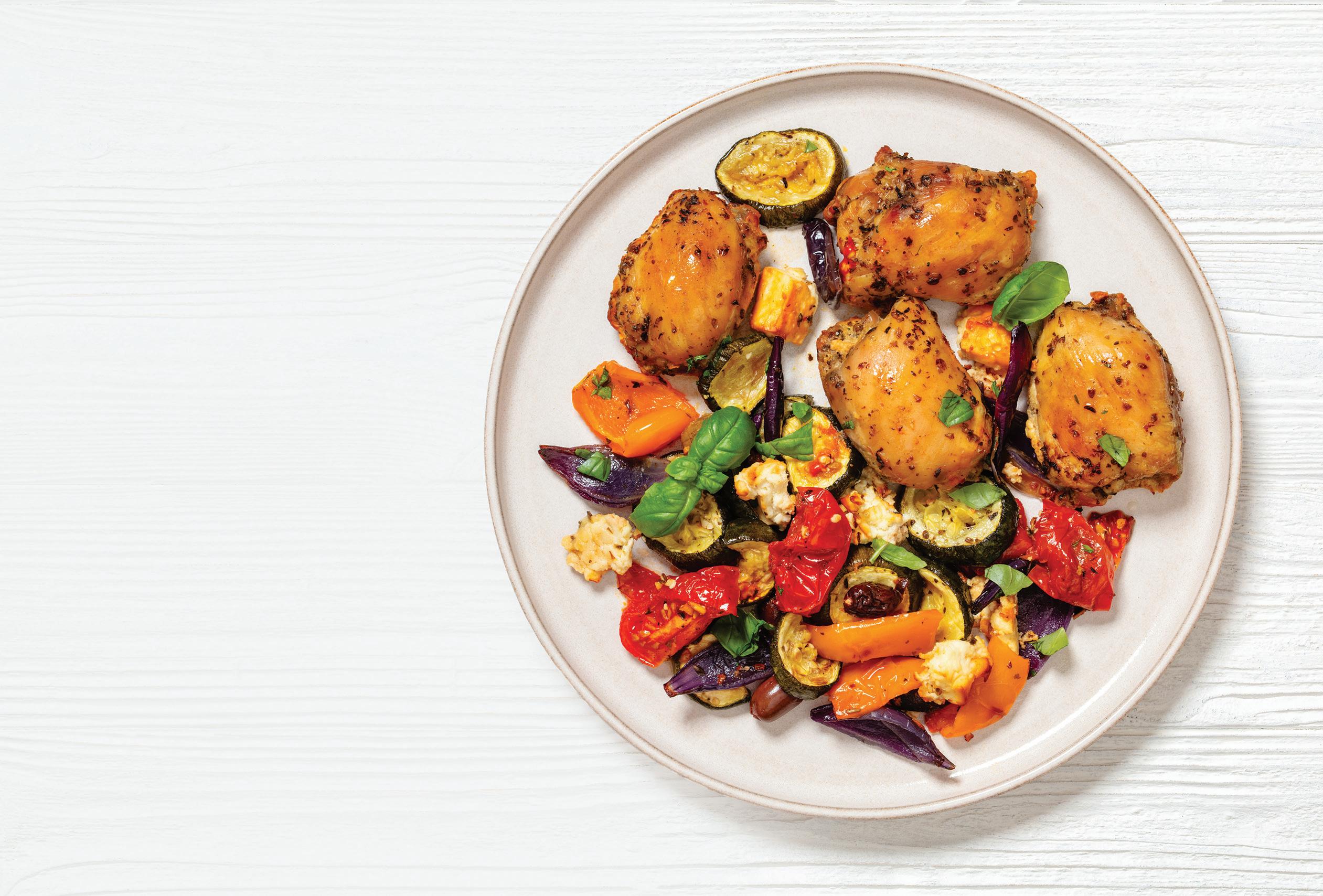

Simply sprinkling some cinnamon on cereal or other foods may lead to better glucose control in people with obesity and prediabetes. Triglyceride concentrations also decreased in participants in a new study, and the daily cinnamon consumption had no ill effects on digestion.
SOURCE “Effect of cinnamon spice on continuously monitored glycemic response in adults with prediabetes: A 4-week randomized controlled crossover trial” by H. Zelicha et al., American Journal of Clinical Nutrition, 1/25/24

Relieve and soothe dry or irritated skin with this nutrient-dense skin repair balm made with manuka and tea tree oils. It provides intensive moisture from grassfed tallow, avocado oil and lanolin, plus soothing relief from eucalyptus, tea tree, and manuka essential oils. Manuka oil is the power behind manuka honey.

This antibacterial menstrual cup made of 100% medical grade silicone. With no added chemicals or toxins, the entire surface of the Bfree Cup is physically antibacterial. Nothing harmful going into your body—just comfortable, convenient period protection. Better for you, and better for our planet. No boiling needed between uses. Simply empty, rinse, and reinsert.

Ease yourself into sleep with aromatherapy patches for skin or fabric. Each patch is made with pure essential oils of lavender and roman chamomile, and is designed to help with greater ease in falling asleep and sleeping more soundly once you are asleep. Place on skin, pillow, or pajamas. Each patch lasts 6-8 hours.

Support strength and vitality with a blend of hydrolyzed collagen and liver derived from Australian, pastureraised and grass-fed certified organic cattle. The resulting combination is a nutrient-dense superfood that supports healthy skin, joints, and gut, and supports immune function and daily energy.* Paleo and keto friendly.

Elevate your skincare routine with these natural Sugar Scrub Cubes. This body scrub is designed to gently cleanse, effectively exfoliate, and deeply moisturize, leaving skin feeling refreshed and rejuvenated. Experience a spa-like indulgence as you reveal smoother, softer skin with every use. Vegan, no artificial ingredients. Lavender or Ocean Blue scent.

Baudelaire
Enjoy the feeling of gentle exfoliation with this soap that contains seaweed gathered from the North Sea. The added seaweed powder forms little clumps which melt more slowly than the soap itself, creating a perfect exfoliating surface. No need for a brush or mitt because the exfoliant is built right in. Use the bar directly on your skin for a gentle scrub.


Peruvian black maca is the rarest form of maca, a root vegetable that is considered to be an adaptogen.* It may help support energy, stamina, and strength.* The gelatinized form of maca is processed to enhance digestion, making it up to 90% more absorbable than non-gelatinized or raw maca root.*
Clinical blend of berberine with its superior phytosome form plus berberine barberry extract for full-spectrum activity.* Berberine provides support for metabolic, lipid, cardio, and glucose support.* Emerald Labs formulas are made without any fillers or binders.

This unique formula promotes blissful peace and emotional balance, and supports a calm, healthy digestive system.* Made with clinically studied Lactium, a peptide shown to reduce perceived stress in women, as well as nourishing botanicals and vitamins.* This blend is designed for women in all stages of life, including pregnant and nursing moms.*

This full-spectrum multivitamin and mineral formula provides daily support during menopause. Includes essential vitamins and minerals plus chasteberry and red clover for menopause support.* Enhanced with a duo of collagen and biotin for supple, youthful skin, plus L-theanine for mood support.*

Effective for relief from symptoms caused by hormone imbalance, this blend supplies Royal Maca plus camu camu.* Maca supports hormone balance, while camu camu, rich in vitamin C, provides adrenal and mood support.* The blend works effectively to support a regular menstrual cycle and a reduction in PMS symptoms.*

Support memory and cognition with this effective blend of magnesium l-threonate, which crosses the blood-brain barrier, and phosphatidylserine.* This caffeinefree formula promotes focus and concentration, plus a balanced mood, for overall brain health support.* Enhanced with vitamins B6, C, and D for daily wellbeing.*

Promote and support healthy hair, skin, and nails with this liquid collagen blend.* It supplies 5+ grams per serving of marine collagen peptides, plus astaxanthin, a source of bioactive substances which support skin revitalization and protection against premature aging.* Enhanced with MSM, hyaluronic acid, biotin, vitamin C and other natural collagen boosters.*
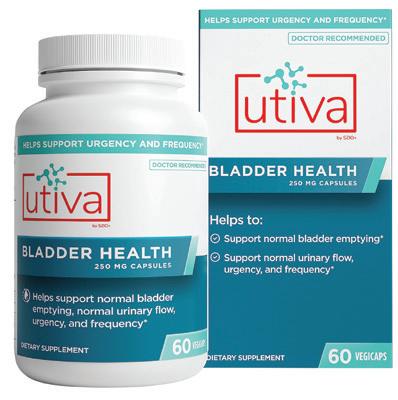
This product contains Flowens, a proprietary formulation made from a unique blend of whole cranberry powdered fruit and seeds, creating a specific profile optimized for supporting bladder health.* The clinically studied formula provides natural, nutritional support for normal urine flow, and helps maintain a functioning bladder.*

Get your real greens, vitamins, and nutritional benefits while enjoying a tasty lollipop. Made from eight real green foods, these tasty lollipops can help provide support for healthy metabolism, immunity, digestion, and overall health.* Each pop contains as much B6 as 15 cups of spinach, and as much B12 as 7 cups of milk. It’s a way to sneak extra goodness into your diet. Tropical citrus flavor.

Give your workout a boost with this advanced creatine complex. Liposomal creatine plus R-lipoic acid offers better absorption to help improve high intensity exercise performance and speed muscle growth.* It may also help reduce fatigue and tiredness.* Dissolve powder in water, drink, and go!




 BY LISA FABIAN
BY LISA FABIAN

Home to some of the world’s healthiest individuals, the Mediterranean region also boasts fresh fruits and vegetables, lean sources of protein, plentiful herbs and spices, and healthy oils to make one super-powered eating plan: the Mediterranean Diet. Try a taste of this diet with these nutritious recipes.
From The Complete Mediterranean Cookbook by the editors at America’s Test Kitchen ($32.99, America’s Test Kitchen, 2016)
2 lb zucchini and/or summer squash, halved lengthwise and sliced ½-inch thick
Kosher salt and pepper
5 Tbsp extra-virgin olive oil, divided
1 red onion, chopped fine
3 garlic cloves, minced
1 tsp grated lemon zest plus 1 Tbsp lemon juice
1 lb farfalle
12 oz grape tomatoes, halved
½ c pitted kalamata olives, quartered
¼ c chopped fresh mint
2 tsp red wine vinegar
4 oz feta cheese, crumbled (1 c)
1. Toss squash with 1 tablespoon salt and let drain in a colander for 30 minutes. Pat squash dry with paper towels and carefully wipe away any residual salt.
2. Heat 1 tablespoon of the oil in a 12-inch nonstick skillet over high heat until just
smoking. Add half of squash and cook, stirring occasionally, until golden brown and slightly charred, 5 to 7 minutes, reducing heat if skillet begins to scorch; transfer to a large plate. Repeat with 1 tablespoon of the oil and remaining squash; transfer to a plate.
3. Heat 1 tablespoon of the oil in nowempty skillet over medium heat until shimmering. Add onion and cook until softened and lightly browned, 5 to 7 minutes. Stir in garlic, lemon zest, and ½ teaspoon pepper. Cook until fragrant, about 30 seconds. Stir in squash and cook until heated through, about 30 seconds.
4. Meanwhile, bring 4 quarts water to boil in a large pot. Add pasta and 1 tablespoon salt and cook, stirring often, until al dente. Reserve ½ cup of the cooking water, and then drain pasta and return it to pot. Add squash mixture, tomatoes, olives, mint, vinegar, lemon juice, and remaining 2
60 min prep time serves 6
tablespoons oil. Toss to combine. Season with salt and pepper to taste and adjust consistency with reserved cooking water as needed. Serve, passing feta separately.
Kitchen Note: A combination of zucchini and summer squash makes for a more colorful dish, but either may be used exclusively if desired. The squash is not peeled, as the skin helps to keep the pieces intact through the cooking process. Cherry tomatoes can be substituted for the grape tomatoes. If farfalle is unavailable, campanelle and fusilli are good substitutes. Kosher salt is preferred to toss with the squash in step 1, because residual grains can be easily wiped away from the squash. If using table salt, be sure to reduce all of the salt amounts in the recipe by half.

From The Complete Mediterranean Cookbook by the editors at America’s Test Kitchen ($32.99, America’s Test Kitchen, 2016)
¼ c extra-virgin olive oil, divided, plus extra for serving
3 c jarred whole baby artichoke hearts packed in water, quartered, rinsed, and patted dry
2 yellow or red bell peppers, stemmed, seeded, and cut into ½-inch-wide strips
1 onion, halved and sliced ¼-inch thick
4 (2 inch) strips lemon zest plus 1 teaspoon grated zest (from 2 lemons)
8 garlic cloves, minced
1 Tbsp paprika
½ tsp ground cumin
¼ tsp ground ginger
¼ tsp ground coriander
¼ tsp ground cinnamon
⅛ tsp cayenne pepper
2 Tbsp all-purpose flour
3 c low-sodium vegetable broth
2 (15 oz) cans chickpeas, rinsed
½ c pitted kalamata olives, halved
½ c golden raisins
2 Tbsp honey
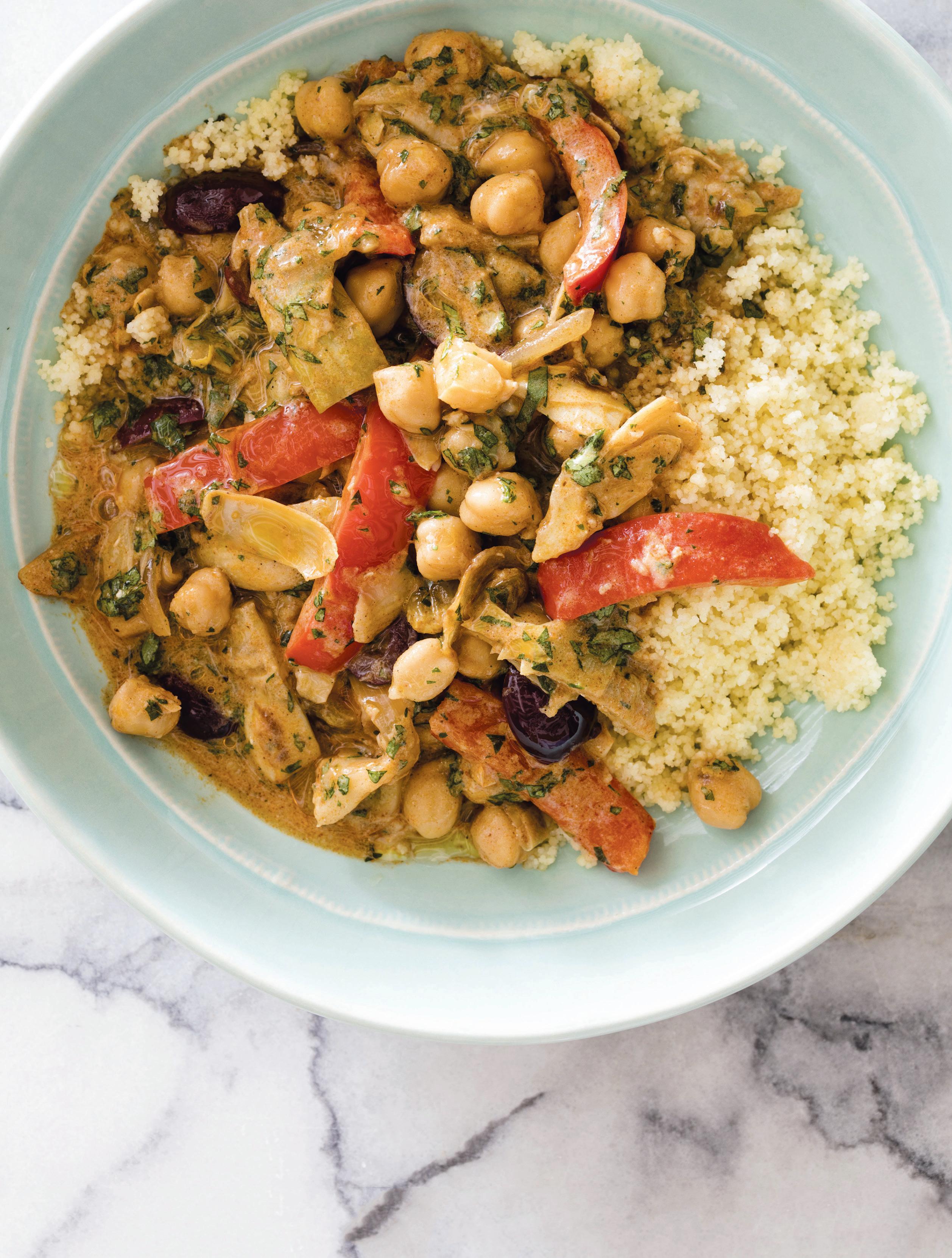
½ c plain whole-milk Greek yogurt
½ c minced fresh cilantro
Salt and pepper
1. Heat 1 tablespoon of the oil in a Dutch oven over medium heat until shimmering. Add artichokes and cook until golden brown, 5 to 7 minutes; transfer to a bowl.
2. Add bell peppers, onion, lemon zest strips, and 1 tablespoon of the oil to now-empty pot. Cook over medium heat until vegetables are softened and lightly browned, 5 to 7 minutes. Stir in twothirds of garlic, the paprika, cumin, ginger, coriander, cinnamon, and cayenne. Cook until fragrant, about 30 seconds. Stir in flour and cook for 1 minute.
3. Slowly whisk in broth, scraping up any browned bits and smoothing out any lumps. Stir in artichoke hearts, chickpeas, olives, raisins, and honey, and bring to a simmer. Reduce heat to low, cover, and simmer gently until vegetables are tender, about 15 minutes.
4. Off heat, discard lemon zest strips. Combine ¼ cup of the hot cooking liquid
45 min prep time serves 8
and the yogurt in a bowl to temper, and then stir yogurt mixture into pot. Stir in remaining 2 tablespoons oil, remaining garlic, cilantro, and grated lemon zest. Season with salt and pepper to taste. Serve, drizzling individual portions with extra oil. Kitchen Note: Slow-cooked, hearty tagines are synonymous with North African cuisine and traditionally boast a range of vegetables and meats. Using only quick-cooking vegetables kept this tagine from being an all-day affair. While the richer, fuller flavor of whole-milk Greek yogurt is preferred, regular plain wholemilk yogurt can be substituted; the sauce will be slightly thinner. While the flavor and texture of jarred whole baby artichoke hearts is ideal for this recipe, you can substitute 18 ounces frozen artichoke hearts, thawed and patted dry, for the jarred. Serve with couscous.
Per serving (made with red bell peppers and served with ½ cup couscous): 845 Calories, 36 g Protein, 2 mg Cholesterol, 145 g Carbohydrates, 25 g Total sugars (4 g Added sugars), 23 g Fiber, 16 g Total fat (3 g sat), 347 mg Sodium, ★★★★★ Vitamin B1 (thiamine), B6, C, Folate, Phosphorus, ★★★★ Iron, Magnesium, ★★★ Vitamin B2 (riboflavin), B3 (niacin), Potassium, Zinc, ★★ Vitamin E, K, ★ Vitamin A, Calcium
From A Taste of the World by Rowena Scherer ($29.95, Collective Book Studio, 2024)
1 lemon
1 large onion
1 fennel bulb
3 Yukon Gold potatoes (about 1½ lb)
2 Tbsp olive oil
2½ tsp salt, divided
Black pepper
4 (6 oz) cod fillets, or 2 heads cauliflower (vegetarian option)
Root Veggie Mix
2 tsp dried oregano
1½ tsp dried thyme
1 tsp fennel seeds
¼ tsp lemon peel granules
Tarra Herbie Mix
2 tsp garlic powder
1½ tsp dried tarragon
1 tsp chicken or vegetable bouillon
½ tsp lemon peel granules
1. Preheat the oven to 425°F. Prep ingredients.
• Lemon—Grate zest to be used in step 2. Then thinly slice lemon into rounds and remove seeds to be used in step 3.
• Onion—Peel and thinly slice.

40 min prep time serves 4
• Fennel—Fronds: roughly chop for step 4. Bulb: cut in half. Discard core and tough outer layer, and then thinly slice into rings for step 2.
• Potatoes—Peel and cut into 1½-inch cubes.
• Root Veggie Mix—In a small bowl, combine all Root Veggie Mix ingredients and mix well.
• Tarra Herbie Mix—In a small bowl, combine all Tarra Herbie Mix ingredients and mix well.
• Cauliflower (if preparing the vegetarian option)—Cut heads vertically into 1½-inch slices (you should have at least 6 slices). Don’t worry if you end up with florets— they’ll still be delicious!
2. Roast vegetables: in a large bowl, toss onion, fennel, and potatoes with lemon zest, Root Veggie Mix, olive oil, 1½ teaspoons of the salt, and pepper to taste. Spread mixture in a baking dish. Cover with aluminum foil and roast until vegetables are softened, about 15 minutes.
3. Bake fish: sprinkle fish fillets or cauliflower steaks with Tarra Herbie Mix, remaining 1 teaspoon of salt, and pepper to taste. Remove foil from baking dish and
lightly toss vegetables. Place fish fillets or cauliflower steaks on top of vegetables, and place lemon rounds over fish or cauliflower. Cover with foil again and bake until cooked through, 12 to 15 minutes.
4. Serve dish: place fish or cauliflower steak topped with lemon slices on individual plates along with roasted vegetables. Spoon pan juices over fish or cauliflower steak. Top with some fennel fronds.
Per serving (made with cod and vegetable bouillon): 377 Calories, 36 g Protein, 73 mg Cholesterol, 41 g Carbohydrates, 6 g Total sugars (0 g Added sugars), 7 g Fiber, 8 g Total fat (1 g sat), 1,075 mg Sodium, ★★★★★ Vitamin B6, B12, C, Phosphorus, ★★★★ Vitamin K, ★★★ Vitamin B3 (niacin), Potassium, ★★ Vitamin B1 (thiamine), Iron, Magnesium, ★ Vitamin B2 (riboflavin), D, E, Calcium, Folate, Zinc
Per serving (made with cauliflower and vegetable bouillon): 304 Calories, 10 g Protein, 0 mg Cholesterol, 54 g Carbohydrates, 11 g Total sugars (0 g Added sugars), 13 g Fiber, 8 g Total fat (1 g sat), 1,304 mg Sodium, ★★★★★ Vitamin B6, C, K, Folate, ★★★★ Potassium, ★★★ Phosphorus, ★★ Vitamin B1 (thiamine), B2 (riboflavin), B3 (niacin), Iron, Magnesium, ★ Vitamin E, Calcium, Zinc
Kitchen Note: Greece is composed of almost 6,000 islands in the Mediterranean. Naturally, seafood is central to its cuisine. Psari plaki (sah-ree PLAH-kee) is a traditional Greek fish dish, and this recipe uses cod. The fillets are baked with spiced potatoes, onions, and fennel until meltingly tender. Topped with lemon slices, this light and flavorful dish is as beautiful as it is delicious.


Collagen is an important structural protein in the body. It is the most integral part of the skin’s fabric, giving skin the youthfulness and tautness so many desire. Collagen is also a building block for bones, muscles, and tendons, and it is found in blood vessels, teeth, and the cornea of the eyes.

Reserveage Nutrition
Vegan Collagen Builder Gummies
For supple skin and joint support.*
A delicious way to promote skin elasticity, hydration, and smoothness.*
Includes vitamin C and astaxanthin.
Natural cherry flavored pectin gummies.
There are more than 20 types of collagen in the body, but types I, II, III, and V are the most well known.
✔ Type I: prevalent in skin, bones, tendons, and ligaments. Source: bovine or fish collagen
✔ Type II: cartilage in joints. Source: chicken cartilage
✔ Type III: muscles, arteries, and organs. Source: bovine collagen
✔ Type V: eyes, skin, hair, and placenta. Source: eggshell membrane
Oral collagen supplements can help support the body’s collagen. For those who follow a vegetarian or vegan diet, it’s important to consume enough collagen building blocks, including vitamin C, amino acids, zinc, and copper. These nutrients can be found in bell peppers, citrus fruits, dark green leafy vegetables, tomatoes, nuts, seeds, whole grains, and beans.
There are a variety of ways collagen works in the body, but here are four common reasons people use collagen peptides:
Younger Looking Skin. With age, the body’s collagen production slows, which contributes to signs of aging, including wrinkles and dry skin. Taking collagen orally has been found to help support the body’s production of collagen, improving overall skin health and counteracting signs of aging. Collagen is often found with hyaluronic acid, which helps keep collagen, and skin, hydrated and youthful.
More Lean Muscle. Hydrolyzed collagen contains high ratios of nitrogen-rich amino acids, such as glycine and proline, important in muscle protein synthesis. This helps support the body’s ability to maintain lean muscle tissue, which in turn can facilitate fat loss. Studies of older men have demonstrated that consuming collagen and utilizing strength training exercises supports lean muscle mass more than strength training alone.
Improved Joint Health. Collagen plays a role in joint health and structure, so it is commonly used by those dealing with joint pain. Type II chicken collagen and Type V from eggshell membrane have both been studied specifically in relation to joint health.
Better Gut Health. Collagen is part of the connective tissue in the gut, and it can help support the lining of the intestinal tract. This can result in less inflammation and improved functioning of the intestinal tract.
Collagen is an easy add-on to any regimen since unflavored powder can be used in beverages and cooking. You can also find collagen in gummy form, as well as liquid and capsule forms. For those living a vegan lifestyle, look for natural collagen builders, including vitamin C and astaxanthin. ●

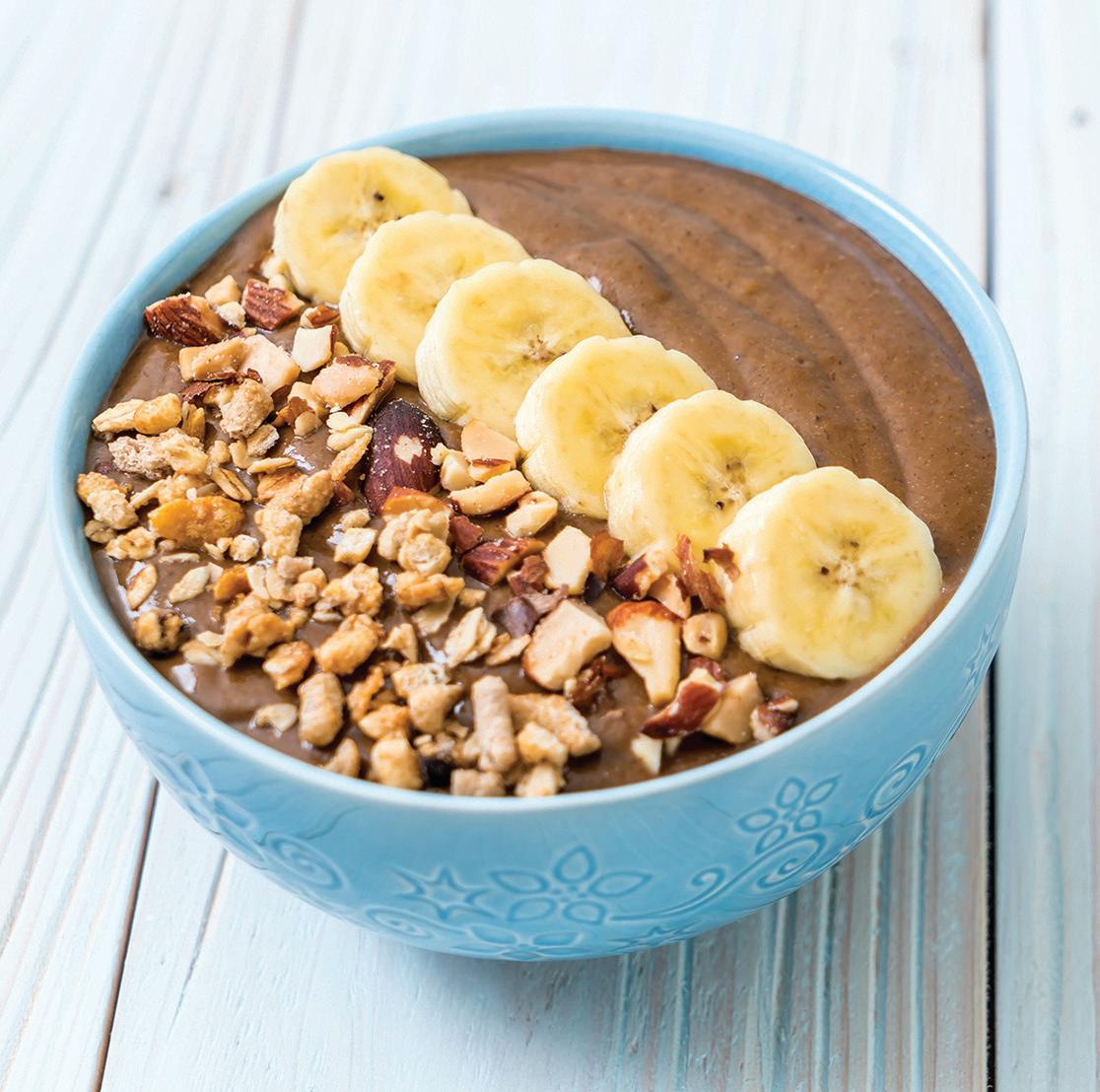
Inspired by plantbasedandbroke.com/coffee-banana-smoothie-bowl
Ingredients
½ c cold brew, or black coffee chilled
¼ c milk or plant-based milk
2 frozen ripe bananas
1 scoop unflavored collagen peptide powder, or vegan collagen alternative
1 tsp maple syrup
Toppings Of Choice
Sunflower seeds or sliced toasted almonds
Chia seeds
Granola
Dark chocolate chips
Toasted coconut chips
Fresh banana slices
Cacao nibs
1. Pour coffee, milk, frozen bananas, collagen, and maple syrup into the blender and blend. Pause blending to push the ingredients down and scrape the sides.
2. Resume blending until creamy and thick. Add more milk if needed to desired consistency.
3. Pour coffee banana mixture into a bowl and top with your favorite toppings.

Paragon Plus™ Collagen Peptides Multi Source
For skin, hair, nail, and joint support.*
Grass fed bovine and wild caught marine collagen, plus bone broth and eggshell membrane. Supplies collagen types I, II, III, IV, V, and X for benefits in the body.* Unflavored.
The eyes are one of the first places to show the effects of time on the skin, often in the form of dark circles, fine lines, and wrinkles. Anti-aging eye creams can help reduce the signs of aging, and they are formulated to be gentle on the delicate skin around the eyes.
It might be tempting to skip the specialty products and use a regular facial moisturizer in place of an eye cream, but you won’t necessarily get the results you want. Eye creams are specially formulated to be gentle on the skin around the eyes. They are thicker and contain more oil than an all-purpose facial lotion. They also contain specific ingredients that have been shown to help reduce the appearance of age-related skin changes.
Collagen occurs naturally in the skin and gives it elasticity, but it decreases as you age. To boost collagen production in aging skin, look for eye creams that

contain vitamin C, collagen peptides, or retinol (a manmade vitamin A derivative). Retinol can be drying to the skin. Some research shows that using retinol with niacinamide, a form of vitamin B3, can help protect the skin barrier and decrease the skin irritation that can occur with retinol.
Bakuchiol (buh-KOO-chee-all) serums and moisturizers—natural, gentler alternatives to retinol— have been shown to work as well as retinol creams on eye wrinkles, with positive results as early as 28 days and continual improvement occurring all the way to day 56.
Some topical products contain actual collagen, not just collagenstimulating ingredients, and these products have been shown to be as effective as collagen supplements in improving wrinkles.
Other ingredients that may reduce the appearance of fine lines and wrinkles include aloe vera, alphalipoic acid, CoQ10, hyaluronic acid, shea butter, and tea extracts. ●
SELECTED SOURCES “6 shea butter benefits,” 11/18/22; “Hyaluronic acid,” 5/4/22, https:// ClevelandClinic.org • “Collagen supplements for aging and wrinkles . . .” by H. Al-Atif, Dermatology Practical & Conceptual, 2/22 • “Hair, nails, and skin: Differentiating cutaneous manifestations of micronutrient deficiency” by M. DiBaise and S.M. Tarleton, Nutrition in Clinical Practice, 5/29/19 • “In a preliminary study on human subjects, a cosmetic cream containing a Harungana madagascariensis plant extract induces similar anti-aging effects to a retinolcontaining cream” by C. Gibielle et al., Clinical, Cosmetic and Investigational Dermatology, 4/19/23 • “Oral intake of specific bioactive collagen peptides reduces skin wrinkles and increases dermal matrix synthesis” by E. Proksch et al; “Oral supplementation of specific collagen peptides has beneficial effects on human skin physiology: A double-blind, placebo-controlled study” by E. Proksch et al., Skin Pharmacology and Physiology • “Oral supplementation of lowmolecular-weight collagen peptides reduces skin wrinkles . . . A randomized, doubleblinded, placebo-controlled study” by J. Kim et al., Journal of Medicinal Food, 12/22 • “Use of silicon for skin and hair care . . .” by L.A. Araujo et al., Anais Brasileiros de Dermatologia, 5/16 • “Using aloe vera around the eyes,” by Alexandra Benisek, www.WebMD.com, 11/9/22 • “Wrinkle creams: Your guide to younger looking skin,” www.MayoClinic.org, 11/20/19

Sustainably sourced · Wild caught · Tested for over 800 contaminants
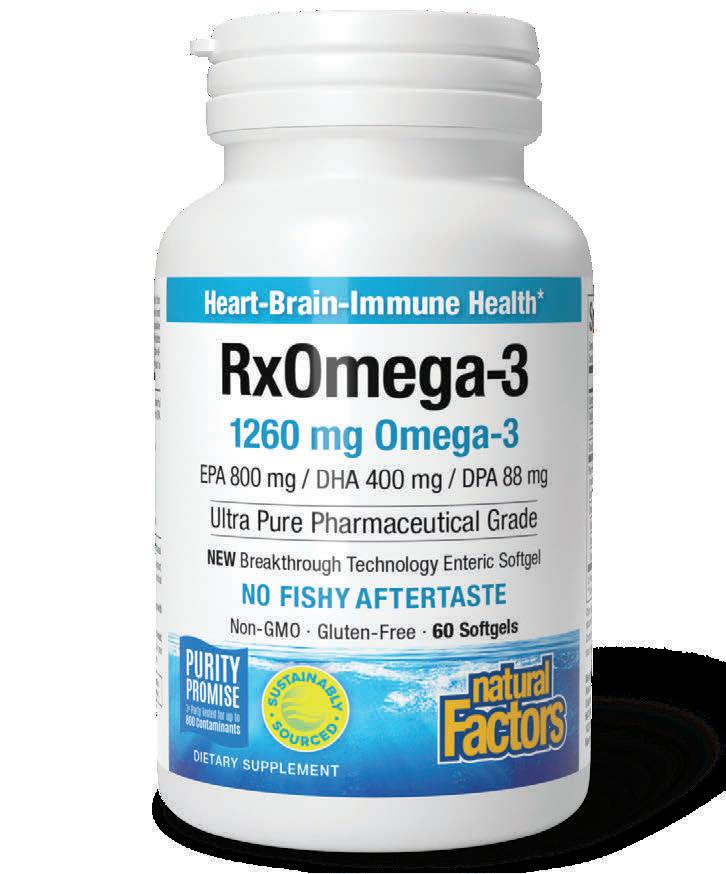


P The Ultra Strengths deliver a superior concentration of 2,150 mg EPA, DHA, and DPA
P Provides powerful heart, brain, immune, joint, and mental health support
P Molecularly distilled
P Guaranteed to meet or exceed the world’s most stringent fish oil standards
POTENCY
Revolutionary Enteripure technology infuses 100% natural plant material with enteric properties into the outer softgel for advanced absorption and assimilation.

Targeted delivery to the intestines
Protects the fish oils from the stomach’s harsh environment
No fishy aftertaste or fishy burp
Concentrated levels of omega-3s

May is Celiac Disease Awareness Month. Celiac disease is an autoimmune condition that causes inflammation leading to permanent damage in the small intestine. Currently, there’s only one cure for celiac disease: strictly eliminating gluten from the diet. Gluten is a type of protein found in foods that contain wheat, barley, and rye.
About 1 percent of the US population has celiac disease, although 80 percent of those with the disease are undiagnosed. It’s important not to self-diagnose; if you suspect celiac, talk to your doctor before starting a gluten-free diet. The disease is diagnosed through evaluations and tests.
In addition to intestinal damage, celiac disease can cause anemia, osteopenia, delayed growth, infertility, fatigue, muscle weakness, and weight loss due to nutrient malabsorption. Research suggests that people with celiac disease may also have an increased, long-term risk of developing skin disorders including psoriasis, eczema, hives, urticaria, vitiligo, acne, and alopecia areata.
Both gluten sensitivity and wheat allergies can be mistaken for celiac, and both are treated by cutting out some or all dietary gluten.
Non-celiac gluten sensitivity (NCGS) patients have many of the same symptoms as those with celiac disease, but those who are gluten sensitive do not have small intestine damage and do not develop the antibodies associated with celiac. There is no test for NCGS; a physician will confirm the diagnosis after ruling out celiac disease and wheat allergy and when a glutenfree diet lessens symptoms.
Wheat allergy can cause breathing issues, rashes, heart palpitations, facial swelling, and even anaphylactic shock. People who are allergic to wheat should avoid eating it, but they may eat rye and barley. Wheat allergies are diagnosed through blood and skin testing. ●
SELECTED SOURCES “Celiac disease,” www.MayoClinic.org, 9/12/23 • “Celiac disease,” UCLA Health, https://uclahealth.org • “Celiac disease vs. gluten sensitivity or gluten intolerance” by David Greenberg, www.Celiac.com • “Celiac disease vs. wheat allergy,” www.BeyondCeliac.org



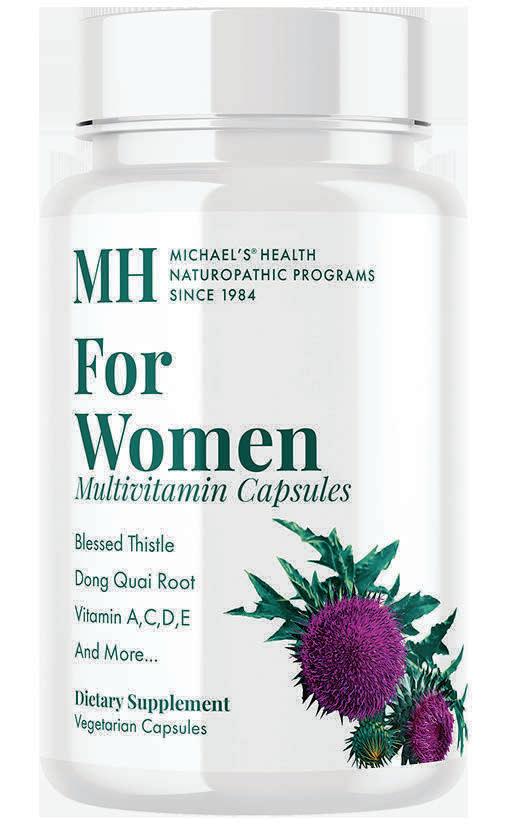
Women have varying nutritional needs as they go through life. Being healthy for childbirth through menopause. Each stage requires specific nourishment to maintain good health.


Excerpted with permission from The Culinary Pharmacy: Intuitive Eating, Ancestral Healing, and Your Personal Nutrition Plan by Lisa Masé ($24.99, Healing Arts Press, 2023)

As infants, our guts colonize with beneficial bacteria, which secrete bioactive compounds that affect our physiology and metabolism. These bacteria have a symbiotic relationship with the human body and are crucial to maintaining homeostasis, or balance, in our systems. A healthy microbiome leads to strong immunity, balanced blood sugar, regulated cholesterol, and good mental health, among other things. Medication, stress, food choices, and disease can negatively affect the natural colonies of gut bacteria. Certain foods, on the other hand, can maintain or repopulate our beneficial gut microflora.
Prebiotics are those foods we eat that, in turn, feed our gut microflora. They mainly comprise the dietary fiber found in legumes, fruits, vegetables, and whole grains. Some good sources of prebiotics are apples, artichokes, asparagus, avocado, flaxseed, banana, dandelion greens, leeks, oats, and unsweetened cacao. One of my favorite prebiotic food sources is apple cider vinegar. It helps balance blood glucose as well as being wonderful for enhancing pancreatic enzyme secretions and nourishing gut flora. (Note: Avoid apple cider vinegar if you have yeast overgrowth, but otherwise, enjoy it.)
Postbiotics are the metabolites of gut microflora, or the components that result from intestinal microbes consuming prebiotic fiber. Though they are wastes of a sort, postbiotics directly lead to many health benefits for the body, such as reducing inflammation, preventing irritable bowel syndrome (IBS), and maintaining balanced blood glucose. If you want to get more postbiotics, eat more probiotic foods.
Probiotics are those foods that themselves contain the very same microbes we need for a healthy microbiome. Eating probiotics repopulates our gut microflora. They help strengthen the body’s barrier against infection, as well as boosting the antibacterial, immune-modulating, and anti-inflammatory aspects of a healthy gut.
You can gain probiotic benefit from foods like yogurt, kefir, kombucha, tempeh, miso, sauerkraut, and kimchi. Do you know which ones are indigenous to your ancestral food traditions? I grew up with sauerkraut as well as jars of giardiniera, lacto-fermented onions, peppers, celery, carrots, and cauliflower. Just as with pickles, giardiniera, whose name means “gardener,” can

be either lacto-fermented with salt and time or quickly pickled with vinegar. The quick-pickled version of this gut-balancing condiment is known in Italy as sottaceto, “under vinegar.”
It seems like everyone is recommending probiotic supplements these days. In 2001, a groundbreaking research study was published in Science magazine explaining that we can augment the beneficial bacteria in our body by taking broad-strain probiotic supplements. As important as this discovery was, it did not consider what we now know: Just as we have a blood type, we have an enteric type. Some probiotic strains might not be good for certain enteric types. For this reason, I recommend getting probiotic support from food. With food, the body is better able to take what it needs and leave the rest behind. ●

Lisa Masé is a board-certified holistic nutritionist (BCHN) and a registered health and nutrition coach (RHNC), as well as an herbalist, intuitive eating coach, food sovereignty activist, and poet. The founder of Harmonized Living, a wellness coaching practice, Lisa lives on unceded Abenaki land in Montpelier, Vermont. Learn more about Lisa and her work at www.harmonized-living.com

Women fill many roles and often do a lot for other people. While caring for others, a woman must also remember to care for herself, starting with a good foundation for health. When it comes to women’s health, what is a firm foundation? It includes a healthy diet, exercise, good lifestyle choices, and basic essential supplements.
✔ Diet. Good food choices can help improve your overall health and vitality. Emphasize intake of colorful fruits and vegetables, healthy fats from nuts and seeds, lean protein sources like fish or tofu, and fiber from whole grains. Drink plenty of pure water to keep your body hydrated.
✔ Exercise. Exercise can help your mood, weight control, and . . . bones? Yes, bones benefit from

Emerald Labs
Women’s 45+ 1-Daily Multi
Iron-free multi with Albion chelated minerals.
Includes essential vitamins, including coenzymated activated B complex. Plus antioxidant support from L-glutathione, lutein, CoQ10, and more.
With a raw whole food blend for full spectrum support.*
weight bearing exercise, so it’s important to get up and move. Walking, jogging, yoga, and weight training are all great options. Find something you enjoy and do it consistently.
✔ Lifestyle Choices. Choose to cut back on sugary sweets, reduce alcohol consumption, and quit smoking. Ensure you are getting enough sleep each night to allow your body and mind to rest and recuperate each day. This sleep can improve your mood and even your skin! In addition to diet and exercise, your daily lifestyle choices can truly make a difference in your health and well-being.
✔ Basic Supplements. Supplements are designed to help fill in the gaps where the daily diet may be lacking. There are many important dietary supplements, but the top two for women are a high-potency multivitamin and a bone support supplement. In multivitamins, look for formulas that have enough B vitamins to help with stress, antioxidants to help protect your cells, and foundational minerals like iron and magnesium in chelated forms that your body will absorb more easily. Women who are still menstruating need to take a multivitamin with iron; those not menstruating should take a multivitamin with low or no iron.
Bone strength is important for all ages, but it becomes a greater issue as women move into and beyond menopause. Women who have had

hysterectomies and women in menopause should consider taking bone-building formulas that include calcium and ingredients like magnesium, zinc, and vitamins D and K, which may help support bone density. When it comes to other supplements, look for formulas that help meet your specific health needs.
✔ Yeast Control: The main defenders your body uses in the gut to keep yeast in check are probiotics, or friendly bacteria, which are what you get in yogurt and/or probiotic supplements. Probiotic supplements may be more beneficial when yeast is a problem because they are more concentrated, have no sugar (unlike some yogurts), and can be taken in forms that directly release in the intestines where they need to go.

Solaray Super Multidophilus
Helps support the normal absorption of nutrients in the digestive tract.*
Boosts overall wellness.*
High potency vegan, dairy free probiotic blend with prebiotic inulin.
✔ Younger Skin: In addition to vitamin C-rich foods and plenty of water, collagen and hyaluronic acid are ingredients that support beautiful, younger looking skin.
✔ Menopause Symptoms: Choose foods rich in phytoestrogens, such as flaxseeds, unprocessed soy foods, nuts, and whole grains to help reduce hot flashes. For women who are found to be estrogen dominant through hormone testing, topical progesterone may offer some help. Progesterone works in balance with estrogen, so less progesterone during menopause can cause the undesireable side effects of estrogen to surface. Using a natural topical progesterone cream can help balance the estrogen to progesterone ratio. In addition, a variety of formulas are available to support women during this transition time. ●
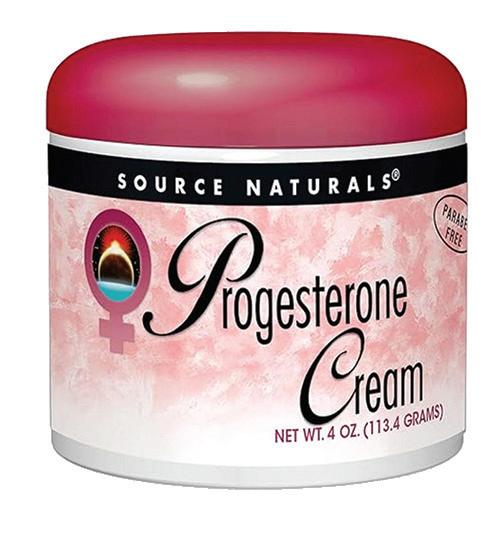
Source Naturals
Progesterone Cream
Features progesterone USP derived from soy. Guaranteed to contain 500 mg of progesterone per ounce.*
Balancing cream.*
There’s a lot to like about eggs. From their perfectly elegant shape to the ease with which they can be prepared, eggs are enduring delights. Suitable for just about every cooking method, they can be poached, boiled, grilled, fried, baked, steamed, stuffed, pickled, and scrambled.
Beyond a mere breakfast favorite, eggs have found their way into sandwiches and burritos, placed atop burgers, and made into hearty international favorites like huevos rancheros, chiles rellenos, goat cheese and spinach quiche, egg foo young, and spaghetti alla carbonara.
Here are some quick tips for buying, handling, storing, and cooking eggs.


Store eggs, unwashed, with their pointed ends facing down. This keeps the yolks centered in the middle of the whites and makes for prettier deviled and hardboiled eggs.

Always wash your hands after handling eggshells.

To determine the freshness of an egg, place it in a clear glass of water. A very fresh egg will lie on its side on the bottom of the glass. Older eggs will sit upright in the glass. If it floats, the egg is old and best discarded.

Most recipes call for large eggs. The average large egg has about 2 tablespoons of egg white and 1 tablespoon of egg yolk.


If you wish to purchase eggs that come from chickens that have access to the outdoors and space to roam, look for the label Certified Humane Pasture-Raised.

When a cracked egg is cold, it can cause fats like butter to harden and can create lumps in batters. Unless a recipe specifies otherwise, use roomtemperature eggs for baking. For easier separation of yolks from whites, be sure eggs are cold.


Use a glass or metal bowl when whipping egg whites. A plastic bowl can have residual grease film, which can prevent whites from properly whipping. Older eggs are easier to peel than fresh when hardboiled. Another tip for easy-to-peel eggs is to immediately plunge just-boiled ones into an ice bath.

To put the white versus brown debate to rest, an egg’s color is determined by the hen’s breed, not the freshness of the egg or what the hen ate.There is no nutritional difference between the two colors. Which color to pick? It’s personal preference.
On the next page are two twists on some popular and time-tested ways to enjoy eggs. ●
From More Daily Veg by

35 min prep time serves 12
Joe Woodhouse ($26.99, Kyle Books, 2023)
6 eggs, room temperature
2½ oz mayonnaise
¼ oz capers, roughly chopped
½-1 small shallot, finely diced
Juice of ½ lemon
1 heaped tsp hot paprika, plus extra for dusting
2 cornichons, finely diced
¼ oz chives, finely chopped
Sea salt flakes and black pepper
1 chili, thinly sliced, to garnish (optional)
1. Place eggs in a medium saucepan filled with cold water, with lid on. Heat over medium heat until a gentle simmer. As eggs are heating up, very gently swirl eggs in water, moving them in a circular motion around base of pan, 2 to 3 times. This will help to center the yolks, making life a lot easier and neater when filling them later. Once at a good bubble, turn off heat and leave eggs to sit in water for 5 minutes with lid on.
2. Drain eggs and return to pan. Shake to break shells. Run under cold water to fill pan around eggs. Empty water and refill with cold water. Let sit for a couple of minutes until you can handle eggs for peeling. Remove shells and slice each egg in half across their equators. Cut a thin silver off each top and bottom, so each half will stand up without rolling over. These trimmings can be chopped and added to filling mixture.
3. In a small mixing bowl, add egg yolks and remaining ingredients, except chili. Taste and add more shallot, lemon juice, paprika, salt, and pepper to taste, if desired.
4. With a teaspoon, carefully divide yolk mixture between egg whites. Top with a slice of chili, if desired. Add dusting of paprika for old times’ sake. By all means pipe mixture into egg whites to go full retro. Just be sure to use a wide nozzle as mixture is quite chunky.
Kitchen Note: These are a kind of turbocharged devilled egg of 1970s fame. Excellent as a dinner party canapé, or even as a starter with some lettuce to make more of an egg salad. Chop through the eggs and mix with the filling to make a fantastic sandwich filler.
Per serving (2 devilled egg halves): 158 Calories, 6 g Protein, 165 mg Cholesterol, 4 g Carbohydrates, 2 g Total sugars (0 g Added sugars), 1 g Fiber, 13 g Total fat (3 g sat), 202 mg Sodium, ★ Vitamin B2
From the Taste for Life test kitchen
8 eggs
¼ c low-fat milk
¼ tsp salt
⅛ tsp freshly ground black pepper
1 Tbsp oil
6 oz smoked salmon, chopped
3 Tbsp low-fat cream cheese
3 Tbsp minced fresh dill
1. Whisk eggs, milk, salt, and pepper in a bowl.
25 min prep time serves 4
2. Heat oil in a nonstick skillet over medium heat. Add salmon and sauté for 1 minute. Add egg mixture. Gently scramble until eggs are half set.
3. Add cream cheese in small pieces. Continue to scramble until eggs are set.
4. Stir in dill and serve.
Per serving: 234 Calories, 20 g Protein, 337 mg Cholesterol, 2 g Carbohydrates, 1 g Total sugars (0 g Added sugars), 0 g Fiber, 16 g Total fat (5 g sat), 451 mg Sodium, ★★★★★ Vitamin B12, D, ★★★ Vitamin B2 (riboflavin), Phosphorus, ★★ Vitamin A, B6, ★ Vitamin B3 (niacin), E, Calcium, Folate, Iron, Zinc
 JANE EKLUND
JANE EKLUND

Exercise is critical to your health, but it does come with a risk of injuries that can prevent you from meeting your fitness goals. Read on to learn some simple ways you can reduce the chances of getting hurt while you’re on the move.
Being unsteady can lead to falls and injuries in people of all ages. Mixed training can strengthen muscles as well as proprioception—your awareness of your body position and movement—a good combo for increasing balance.
✚ Doing basic stretching can loosen your muscles and help with balance. Other helpful exercises include lunges and squats, sitting on a stability ball, strength training, and balancing on one leg at a time.
✚ Consider taking vitamin D and omega-3 fatty acids in moderation, which may lower the chances of falling. Be sure to get enough vitamin B12 and protein, too. A shortfall in these nutrients can lead to fatigue and muscle weakness.
✚ Branched-chain amino acids (BCAAs)—including valine, leucine, and isoleucine—are a group


of essential amino acids that can help grow, regenerate, and repair muscles, and regulate energy consumption. These amino acids can be found in soy products, meat, fish, seafood, milk, and eggs, and as dietary supplements.
Your bones reach peak bone mass density in young adulthood. Then the decline generally starts, which can—for many adults—end in a broken bone caused by osteoporosis. Focus on these key nutrients to protect your bone health.
✚ Adequate calcium intake guards against fracture risk. There is no need to exceed recommended calcium amounts, which are 1,000 milligrams (mg) per day (through a combination of dietary and supplement sources) if you are 50 or younger and 1,200 mg per day for women 51 or older.
✚ Calcium and vitamin D work together to create breakresistant bones. Large studies document the benefit from supplementing with these nutrients to reduce fracture risk in middle-aged and older adults. ●
SELECTED SOURCES “Applications of omega-3 polyunsaturated fatty acid supplementation for sport performance” by J.D. Philpott et al., Research in Sports Medicine, 4–6/19 • “B-vitamins and exercise: Does exercise alter requirements?” by K. Woolf and M. Manore, International Journal of Sport Nutrition and Exercise Metabolism • “Bone health 2022: An update” by T.J. de Villiers and S.R. Goldstein, Climacteric, 2/22 • “Calcium in the prevention of postmenopausal osteoporosis: EMAS clinical guide” by A. Cano et al., Maturitas, 1/18 • “Easy ways to improve your balance,” Harvard Health Publishing, www.Health.Harvard.edu, 5/6/21 • “Effect of branch-chain amino acid supplementation on muscle soreness following exercise: A meta-analysis” by M.V. Fedewa et al., International Journal for Vitamin and Nutrition Research, 11/19 • “The effect of omega-3 polyunsaturated fatty acid supplementation on exercise-induced muscle damage” by Y. Kyriakidou et al., Journal of the International Society of Sports Nutrition, 1/13/21 • “Fascial tissue research in sports medicine: From molecules to tissue adaptation, injury and diagnostics” by Martina Zugel et al., British Journal of Sports Medicine, 8/14/18 • “Mixed modal training to help older adults maintain postural balance” by A. Marchini et al., Journal of Chiropractic Medicine, 9/19 • “Physical activity programs for balance and fall prevention in elderly” by E. Thomas et al., Medicine (Baltimore), 7/19 • “Vitamin D in athletes: Focus on physical performance and musculoskeletal injuries” by S. Yoon et al., Physical Activity and Nutrition, 6/30/21
Your fascia is a network of connective tissue that literally holds your body together, weaving around your organs, muscles, nerves, blood vessels, and bones. Healthy fascia stretches and returns easily to its initial shape. You can keep it flexible—or restore its flexibility—by following a few guidelines.
✚ Take time every day to really stretch. Try rolling

around in bed in the morning and working all your muscles. You can also stretch your fascia by holding gentle stretches for three to five minutes.
✚ Keep your fascial tissue lubricated and working smoothly by drinking plenty of water.
✚ Loosen up tight fascia in a warm Epsom salt bath. Soak for 15 or 20 minutes, followed by 10 minutes of light activity. Use a soft foam roller or a tennis ball to work your fascia gently and slowly.
Emerging research documents a promising protective effect of omega 3s on bone health, particularly in postmenopausal women. Omega 3s also help to reduce inflammation and ease post-workout muscle soreness. Fatty fish contain the highest levels of omega 3s, but you can also get them from some plant sources like avocados, chia seeds, flax seeds, olive oil, and walnuts.




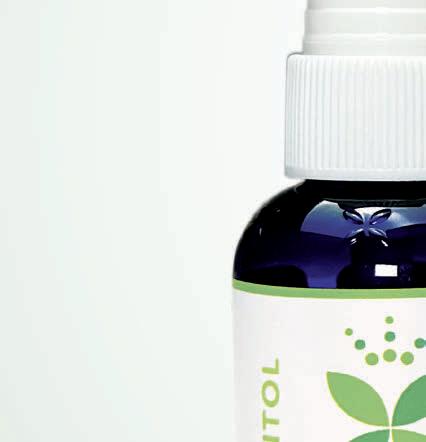










Paragon PlusTM Hyaluronic Acid Extra
Support complex for joint and skin health.*
Provides support for joint flexibility.*
With hyaluronic acid to help retain skin moisture and joint lubrication.* Plus MSM which may support joint flexibility and skin health.*
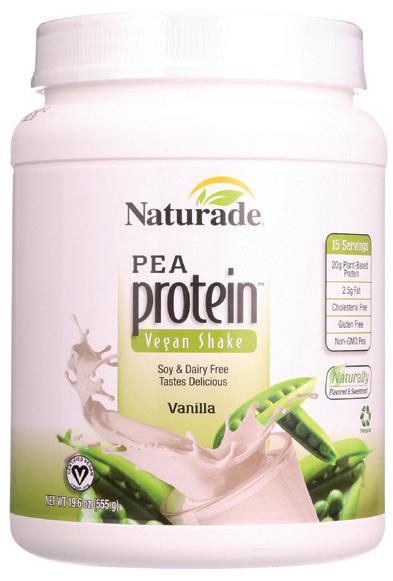
Naturade
Pea Protein Vegan
Shake Vanilla
All the benefits of pea protein in a delicious vanilla shake. Highly soluble, easy to digest, hypoallergenic protein.
Soy free, dairy free, gluten free.
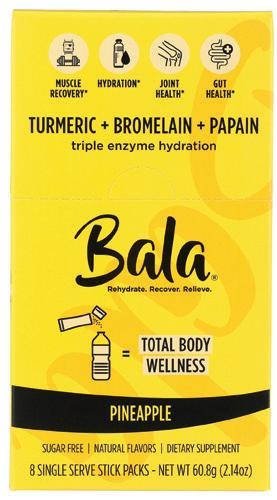
Bala Triple Enzyme Hydration
Drink Pineapple
Enhance hydration, improve energy and endurance, and support recovery.*
With electrolytes, amino acids, and plant enzymes.
Turmeric, bromelain, and papain help regulate the body’s inflammatory response.*
No added sugar.

Alvita Organic Dandelion
Root Tea
Digestive support.*
Individually wrapped preserve the integrity of the herb.
Dual-chamber tea bags allow for a stronger brew. Caffeine free.
Paragon PlusTM

Virgin Coconut Oil
With naturally occurring MCTs, which are less likely to be stored in the body as fat than most other fatty acids.*
MCTs from coconut oil may be used by the body as fuel for energy.*
Coconut oil capsules offer a convenient way to take coconut oil.
Coconut oil can be used as an alternative to butter for cooking and baking, and can be used topically as a moisturizer.
Cold-pressed and unrefined. Made with organic coconut oil.

A tasty drink mix combining gut health and hydration.* Contains baobab, used to support immune and digestive systems, and provide nutrient-dense hydration.*
Plus electrolytes, vitamins B12, and C.

Solaray
Vitamin D3 + K2
Bone strength.*
May help support the transportation and absorption of calcium.*
May support healthy cardiovascular and immune system function and healthy arteries.*






Chamberlin's Opti-PlantTM Protein
Balanced organic plant protein blend of pea and hemp protein. Supports lean muscles and overall health.*
Smooth and delicious texture and taste. No added sugar. *